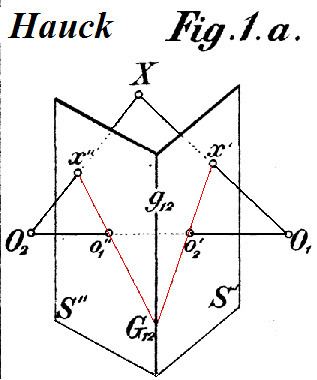 | ||
In the field of computer vision, any two images of the same planar surface in space are related by a homography (assuming a pinhole camera model). This has many practical applications, such as image rectification, image registration, or computation of camera motion—rotation and translation—between two images. Once camera rotation and translation have been extracted from an estimated homography matrix, this information may be used for navigation, or to insert models of 3D objects into an image or video, so that they are rendered with the correct perspective and appear to have been part of the original scene (see Augmented reality).
Contents
3D plane to plane equation
We have two cameras a and b, looking at points
where the homography matrix
The figure shows camera b looking at the plane at distance d. Note: From above figure, assuming
This formula is only valid if camera b has no rotation and no translation. In the general case where
where d is the distance of the camera b to the plane.
The homography matrix can only be computed between images taken from the same camera shot at different angles. It doesn't matter what is present in the images. The matrix forms contains a warped form of the images.
Affine homography
When the image region in which the homography is computed is small or the image has been acquired with a large focal length, an affine homography is a more appropriate model of image displacements. An affine homography is a special type of a general homography whose last row is fixed to
